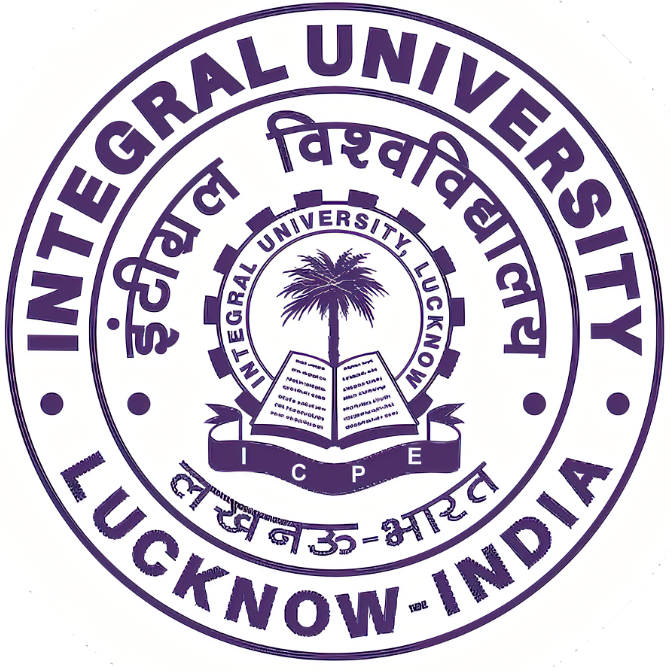
Communities in DSpace
Select a community to browse its collections.
Recent Submissions
Microfluidic Devices: Harnessing the Power of Tiny Devices in Analysing Wastewater Quality
(Springer nature, 2025) Zeba Sadia, Syed Sadiq Abbas, Saimah Khan, Jamal Akhtar Ansari
The reduction in aquatic biodiversity and the growing water shortage are caused by habitat degradation and water pollution. Over the previous few decades, freshwater availability has decreased. Monitoring contaminants in wastewater effluents is essential to identifying areas of water contamination that require treatment. Multiple hazardous components in wastewater can be difficult to trace using conventional detection methods since they vary over time and come from different sources. There is increasing interest in making microfluidic apparatuses because of their phenomenal responsiveness, ease, dynamic response, negligible cost, constancy, and selectivity. Depicted by their ability to control small volumes of fluids through microchannels, they are emerging as moderate devices in normal checking, particularly in analysing wastewater quality. These miniature apparatuses furnish significant opportunities over the conventional approach, including reduced sample volume, faster processing times, high sensitivity, and the potential for on-site real-time analysis. Additionally, these systems can combine several analytical tasks into a single, small instrument, including sample preparation, segregation, identification, and quantification. Microfluidic devices can accurately measure contaminants like heavy metals, organic pollutants, pathogens, and nutrient levels. This chapter explores the applications of microfluidic technology in wastewater analysis, emphasizing its impact on improving water quality management and environmental protection.
Building Sustainable Digital Education Ecosystems: A Stakeholder-Centric Roadmap Towards 2030 and Beyond
(Pratibha Spandan, 2025) Bushra Sumaiya
This chapter presents a comprehensive analysis of how digital education can be transformed into a sustainable, inclusive, and future-ready system through multi-stakeholder collaboration. Recognizing the disruptive yet transformative potential of digital technologies in education, the chapter outlines the strategic roles and shared responsibilities of key actors—government, academia, industry, and civil society. It emphasizes that the sustainability of digital education hinges not only on technological access and innovation but also on policy coherence, equity of opportunity, and responsiveness to diverse learner contexts. A central argument is the pressing need to develop inclusive, localized, and learner-centric models that bridge the digital divide and promote meaningful engagement. The chapter advocates the use of Open Educational Resources (OERs), capacity-building initiatives, community-based innovations, and co-created content that reflect local languages, cultures, and needs. A proposed stakeholder framework for digital education sustainability illustrates the interdependence among various actors, emphasizing mutual accountability and coordinated action. The chapter concludes with a roadmap for 2030 and beyond, aligned with the Sustainable Development Goals, particularly SDG 4, offering actionable recommendations for policy, practice, and partnerships. By developing an ecosystem built on equity, innovation, and shared values, this chapter aims to contribute to the global discourse on digital education reform and sustainability.
Digital Assessment Strategies: Formative, Summative, and Adaptive Models
(Pratibha Spandan, 2025) Shagufta Nazneen Ansari, Amita Bhati
Education is the foundation of societal development, shaping economic progress through skill enhancement and the creation of sustainable employment opportunities. Beyond economic growth, quality education plays a pivotal role in driving sustainable development, fostering social inclusion, and empowering individuals. Sustainable Development Goal 4 (SDG 4) seeks to ensure inclusive, equitable, and lifelong learning opportunities for all, making education financing a critical factor in achieving its objectives. This study examines the integration of SDG 4 in the Indian context, focusing on the effectiveness of policies and government initiatives in enhancing education financing for quality improvement. It identifies key challenges such as disparities in access to education, inadequate infrastructure, deficiencies in teaching quality, and variations in learning outcomes. Using a mixed-methods approach, the research draws on both primary and secondary data sources, including government reports, academic publications, policy documents, and educational project analyses. The findings highlight the urgent need for increased financial investment, targeted policy reforms, teacher capacity-building programs, and the integration of technology to bridge existing gaps in educational quality and accessibility. The study offers strategic recommendations to strengthen education financing mechanisms, ensuring alignment with SDG 4 goals and fostering a more inclusive and effective education system in India.
Economic Analysis of Changes in Bioreactors Configuration Yielding Ethanol and Biochemicals
(Springer Singapore, 2026) Arshia Akhtar, Haroon
Economic analysis of changes in bioreactor configurations for ethanol and biochemical production involves evaluating the financial impact of modifications on reactor design, operation, and efficiency. By altering bioreactor configurations, such as introducing new mixing strategies, optimizing nutrient delivery, or improving temperature and pH control, the overall productivity of ethanol and other biochemicals can be increased, potentially lowering the cost of production. However, these changes often require capital investment in new equipment, technology upgrades, and possibly additional labor costs. From an economic perspective, the key benefits include enhanced yields, reduced processing times, and energy savings, all of which can contribute to cost reductions. For instance, more efficient bioreactor systems can minimize resource consumption (e.g., energy and raw materials) while maximizing output. On the other hand, the potential for increased operational complexity or the need for specialized skills in managing new configurations may increase maintenance and training costs. Ultimately, the economic viability of these changes depends on a careful cost-benefit analysis, considering both short-term investment and long-term returns. The balance between the initial outlay and ongoing operational savings determines whether the change will lead to overall profitability in ethanol or biochemical production. Continuous monitoring and optimization of the bioreactor's performance are essential to maximize economic returns.
Social Innovation in Sustainability Transition: Approaching Sustainable Development through Social Innovations
(Bharti Publications, 2025) Zia Afroz, Neha Singh
Social innovation refers to the development and implementation of novel solutions to social and environmental challenges. These solutions aim to be more effective, efficient, sustainable, or just compared to existing ones. The concept involves collaboration among various sectors, including non-profits, businesses, governments, and often engages the community in the problem-solving process. Key aspects of social innovation include the introduction of new ideas, effective implementation, measurable impact, cross-sector collaboration, and sustainability.
